Occasionally I post some recent bird photos that didn’t quite measure up to standalone status on my blog but they’re of reasonably qood quality and collectively they show my readers some of what I’ve been up to in the field lately. These photos were taken on Antelope Island and in the Wasatch Mountains in the last couple of weeks.
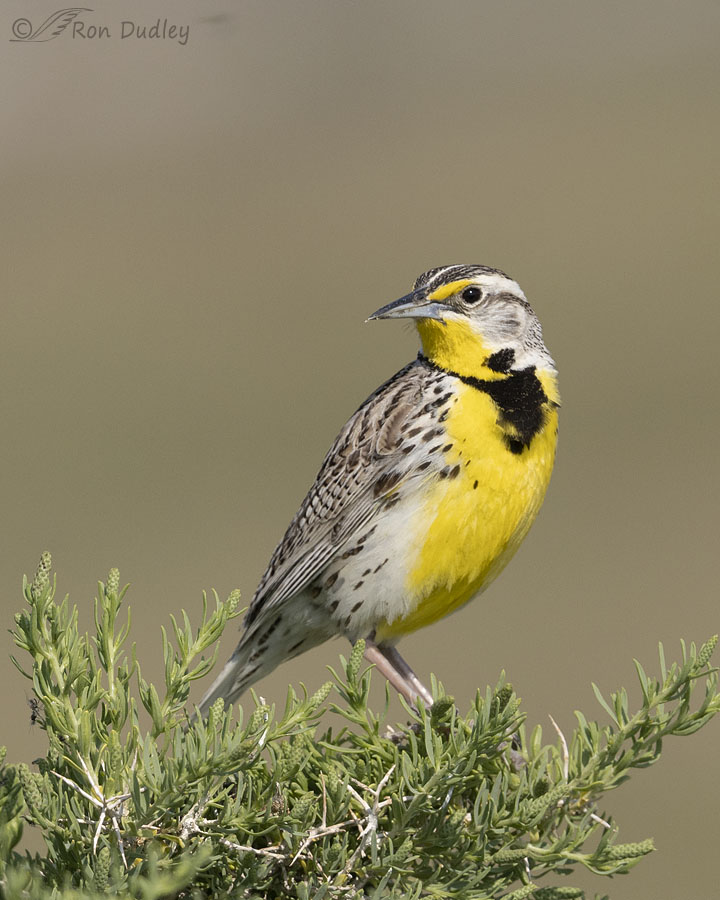
A Western Meadowlark perched on greasewood in light that’s beginning to get just a little bit harsh.
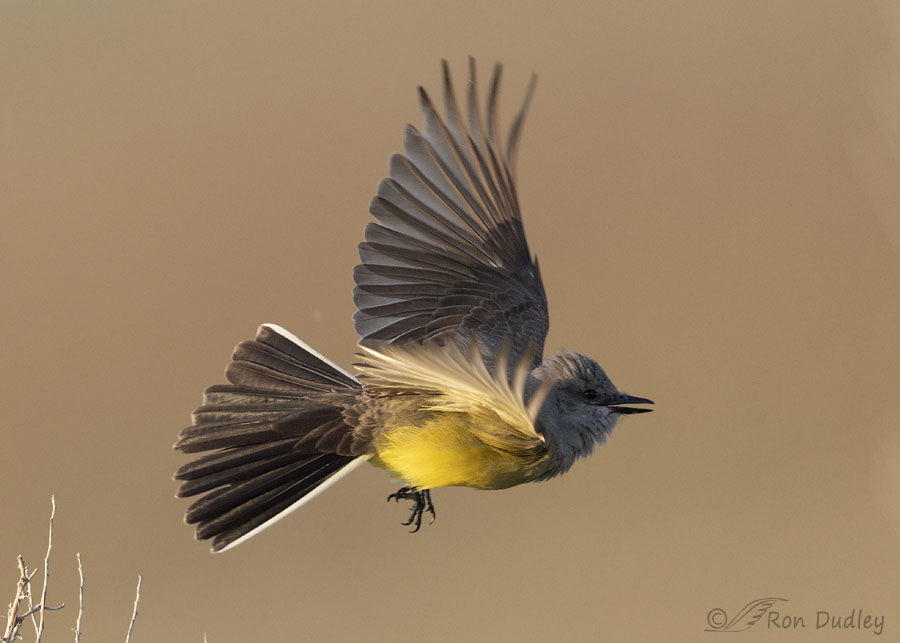
A Western Kingbird soon after takeoff.
Kingbirds are among my favorite birds to photograph at takeoff because their takeoffs tend to be quirky and on the verge of being out of control. Here the bird’s wings and tail seem to be working at odds with each other, with the wings appearing to be trying to go one way and the tail another.
Yeah, I know, the bird’s face is in shade but I do have a catch light in the eye. Barely.
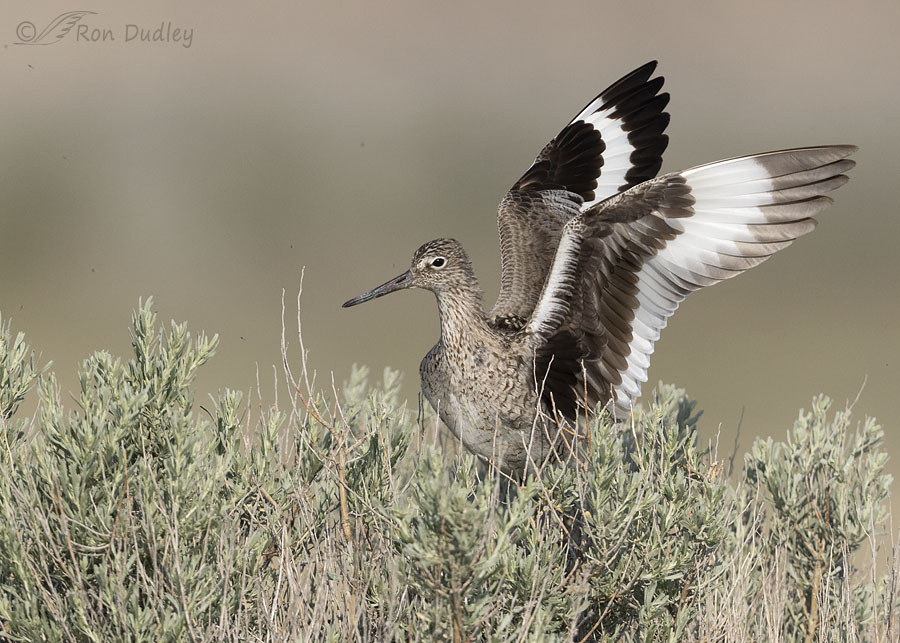
A Willet attempting to regain its balance on sagebrush. This is my best shot so far this spring to show off the bold black and white patterns that are revealed when Willets open their wings.
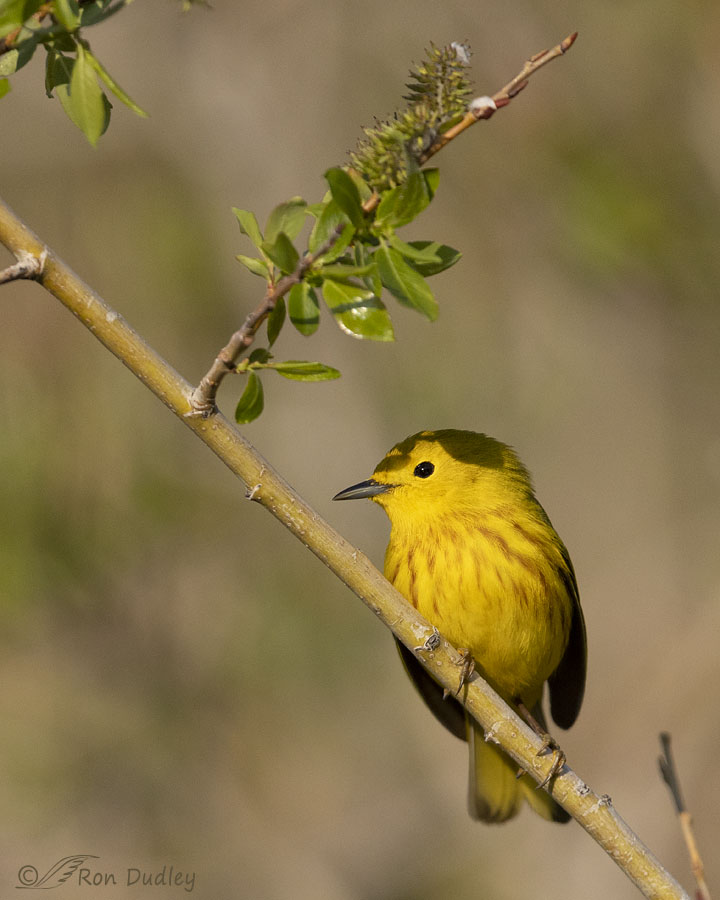
A male Yellow Warbler in impersonation mode.
For the first 10 seconds or so I had this bird in my viewfinder I got all excited because I thought it was a much less common Wilson’s Warbler. Through my viewfinder the shadow on top of his head looked to me like the black cap of a Wilson’s. I don’t see Wilson’s Warblers all that often so for a few moments my heart was skipping some beats.
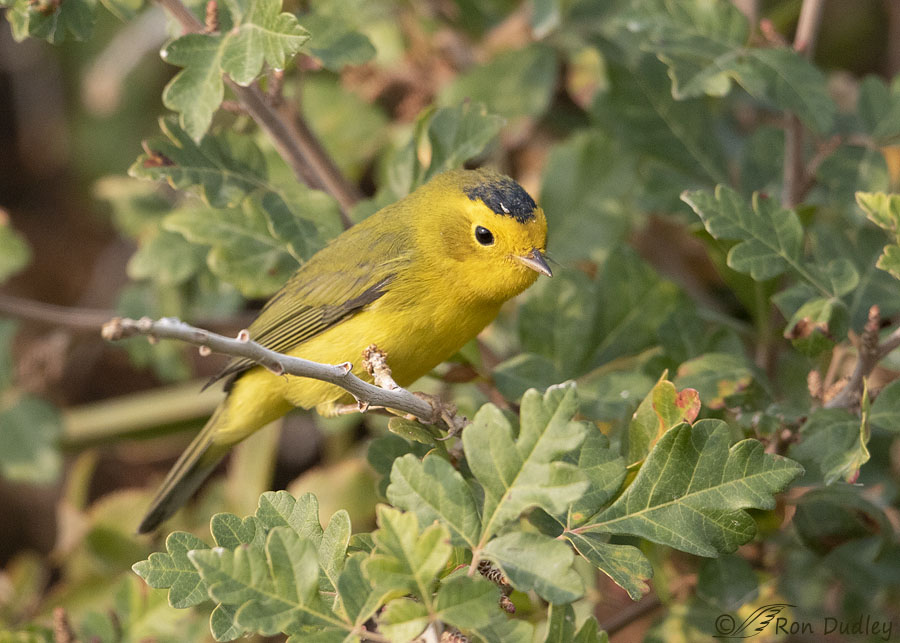
Here’s an older photo of a Wilson’s Warbler to illustrate my excuse for making such a basic ID error.
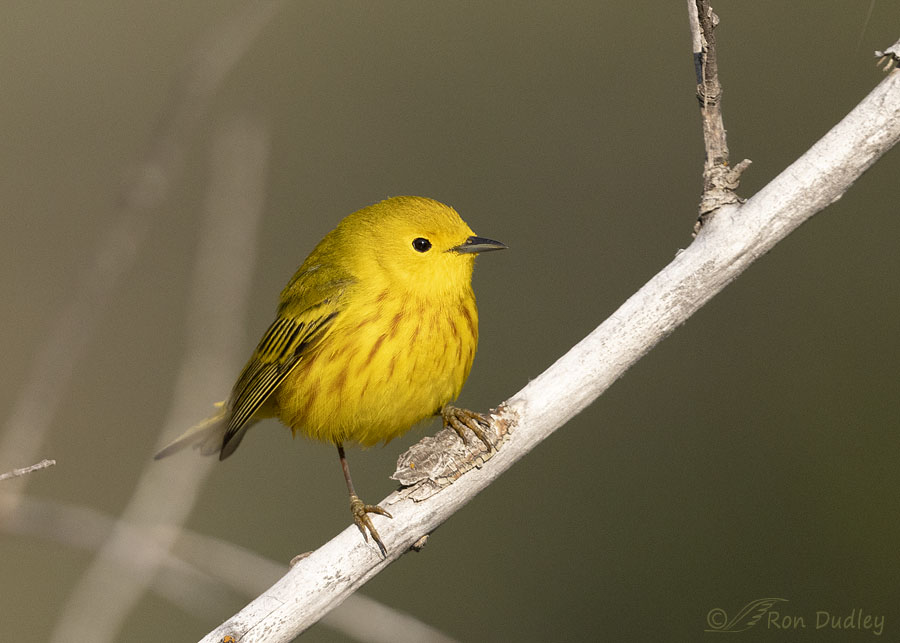
This is the same male Yellow Warbler. Nope, no black cap.
You might think it was a silly mistake to make but keep in mind that what I was seeing through my viewfinder was uncropped with the bird small in the frame, so it was easy to mistake the shadow for a black cap. The excitement of the moment only added to my confusion.
Ron


Lovely assortment!
The other night at my place of work I noticed shadows of what I assumed to be bat’s flying around the floodlights, but apon closer inspection I realized they were the Western King birds that are nesting on the premises. There were gathering insects attracted to the illumination. Unusual behavior for what I assumed was a diurnal species.
That really did look like a Wilson’s Warbler!
I have an unrelated question and there’s no hurry for the answer:
I never purchased and set up a bird feeder in my yard because I thought I was tampering with Mother Nature. If I go on vacation and can not keep it full, I felt I would be messing with their feeding and perhaps survival?
But I remember you said you had a hummingbird feeder in your yard so I was wondering what your opinion is on bird feeders and hummingbird feeders in particular?
Is it important to not let them run out of food?
Jo
Jo, I put up both types of feeders and don’t see any problem with either.
Before I could fully respond to your question I got this in an email from Dan Gleason. I know from past experience he won’t mind if I quote him:
“Hi Ron,
I just see that someone asked about risk of keeping feeders up and use of hummingbird feeders. These are frequent questions and too often wrong answers are given by well meaning, but uninformed people. I’m always happy to take questions like that if you ever wish to redirect them. It seems inappropriate for me to put this on your blog and a complete answer would be too long anyway. There is a lot of good evidence supporting the use of feeders. Even under severe conditions birds generally only rely on feeders for 20% or less of their daily diet, usuallly much less. That includes hummingbirds which also need many arthropods for protein and to feed young. Feeders left empty when on vacation is no problem and bird quickly find food elsewhere. John Marzluff at the University of Washington personally thanked me for openingg a Wild Birds Unlimited store and encouraged me to have everyone keep their feeders full all year. He did the interesting work on crows several years ago and is an expert on habitat loss and how important some suburban areas and feeders have become. His book Welcome to Suburdia is an excellent read on this topic.
Dan”
Feathered enchantment on and all. I feel for you about the Wilson’s Warblers but the Yellow variety is also a charmer.
Thanks, EC. I’m plenty happy enough to see the Yellow
i must admit, you had me very confused with the warbler until I read your caption. A Yellow Warbler with a dark crown in Utah? There is a variant of Yellow Warbler (Golden Warbler) with a dark chestnut crown but it is only in the West Indies. Yellow Warbler was my first thought with the streaks in the breast but the crown in shadow certainly was confusing and did bring to mind Wilson’s but it just didn’t fit Wilson’s. It’s often suprising what tricks light conditions can play on us.
Dan, ID on that warbler was even more difficult for me because he stayed about in the same pose for a long time, which kept the shadow on his head for just as long. I’ve got a bunch of photos of him with that “artificial” black cap on his head.
There’s always such good stuff in your Birdpourri, even with the “flaws” you cite. And you are forgiven for thinking the shadowed Yellow Warbler is a Wilson’s, that is very deceptive. I see Yellows here rarely, but Wilson’s come to my fountain for a few days every year, several times a year. They’re such joyful little birds, you can’t help but fall in love.
Chris, I’m lucky if I photograph one Wilson’s per year. Usually I haven’t photographed that many. I see a few more but not many.
I hope the Kingbird didn’t strain something on that takeoff.
Nice to see all these with natural backgrounds.Not a poopy roof to be seen😁
He probably did, Lyle.
I have more poopy roof photos so if you ever want to see more, just let me know.
Nice quality photos all! My favorite is the King Bird – shadowed head and all!
Joanne, and to think I almost didn’t post the kingbird. Because… no light on its face.
Wonderful series, thanks for sharing!
Charlotte Norton
Wonderful!
Charlotte Norton
Thanks, Charlotte.
I always love your Birdpourri posts! I’d be thrilled to have taken even one of these shots. I definitely understand the ID issues on the warbler. You’ve shown some of your uncropped shots before and it always amazes me how small the birds are in the frame — I don’t think I’d be able to spot them in the first place. And thanks for the giggle from Mr. Wings-and-tail-akimbo. 😂
Marty, now that I’m shooting with the R5, birds in the photos I post are often even smaller in the original frame. With such a large file size I can crop more and still have very good image quality.
Had to really strain my 85 year old eyes to see that “barely” visible catch-eye, but good photo nevertheless. Love the Willet’s raised wings. Very nice.
And the Western Meadowlark is one of your best.
Believe me, Everett. I have to strain my 76 year old eyes too.
When I scrolled to the warbler photo my first thought was Wilson’s Warbler!
Peggy, that makes me feel a little better… 🙂
Nice! Takeoff of Western Kingbird does seem to be a “mess”. Don’t know if it’s the light or yours are darker in color than what we usually see year. Can see the mistake of the type of Wabler in the viewfinder – the shadow IS deceptive. Love the little Warblers even if it’s often fleeting views of them. 🙂
“Don’t know if it’s the light or yours are darker in color than what we usually see”
I think it’s the light, Judy. This kingbird was mostly back lit so much of it is in shade, sadly including the face.
Thank you once again for my morning dose of bird to go with my coffee.
We have a small fountain/birdbath in the backyard. In that I work from home, I get to pause occasionally through the day to gaze out the kitchen window to see what’s out there. Also, I have set up one of those game cameras to help keep track of the visitors. One of the things that gets my motor running is seeing or getting a snap of a bird that I seldom see. One of those is the Wilson’s Warbler. They are very shy and skittish, and their visits to the water are only seconds long. There are some birds that still give me an excited youthful thrill – however brief – when I spot one.
I can tell, Michael – you get it. I’m not one to chase unusual (or even rare) birds but when one shows up where I’m at it gets me all a flutter. Wilson’s Warblers certainly aren’t rare but I see far fewer of them than Yellow Warblers.